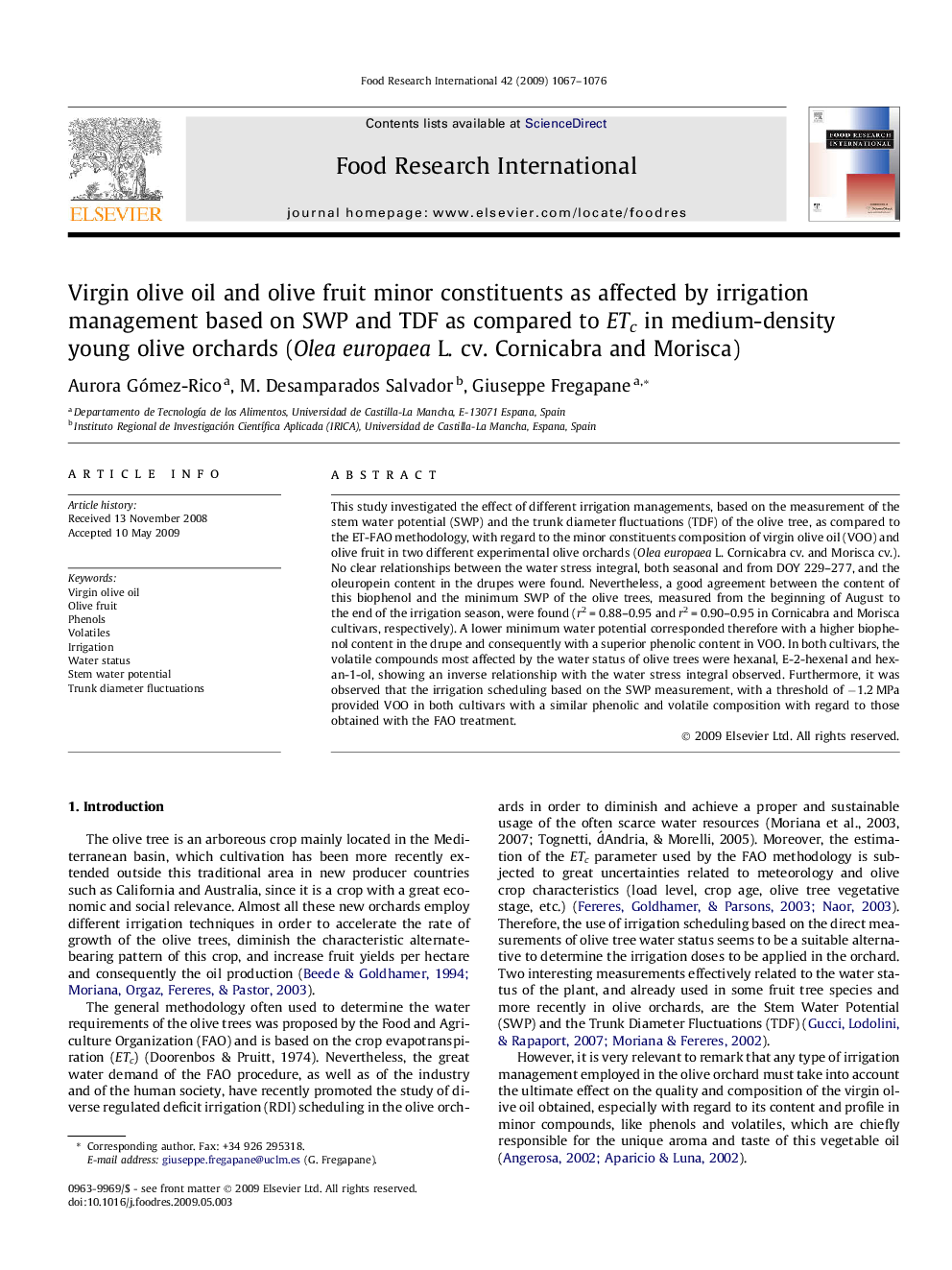| Article ID | Journal | Published Year | Pages | File Type |
|---|---|---|---|---|
| 4562385 | Food Research International | 2009 | 10 Pages |
Abstract
This study investigated the effect of different irrigation managements, based on the measurement of the stem water potential (SWP) and the trunk diameter fluctuations (TDF) of the olive tree, as compared to the ET-FAO methodology, with regard to the minor constituents composition of virgin olive oil (VOO) and olive fruit in two different experimental olive orchards (Olea europaea L. Cornicabra cv. and Morisca cv.). No clear relationships between the water stress integral, both seasonal and from DOY 229-277, and the oleuropein content in the drupes were found. Nevertheless, a good agreement between the content of this biophenol and the minimum SWP of the olive trees, measured from the beginning of August to the end of the irrigation season, were found (r2Â =Â 0.88-0.95 and r2Â =Â 0.90-0.95 in Cornicabra and Morisca cultivars, respectively). A lower minimum water potential corresponded therefore with a higher biophenol content in the drupe and consequently with a superior phenolic content in VOO. In both cultivars, the volatile compounds most affected by the water status of olive trees were hexanal, E-2-hexenal and hexan-1-ol, showing an inverse relationship with the water stress integral observed. Furthermore, it was observed that the irrigation scheduling based on the SWP measurement, with a threshold of â1.2Â MPa provided VOO in both cultivars with a similar phenolic and volatile composition with regard to those obtained with the FAO treatment.
Keywords
Related Topics
Life Sciences
Agricultural and Biological Sciences
Food Science
Authors
Aurora Gómez-Rico, M. Desamparados Salvador, Giuseppe Fregapane,
